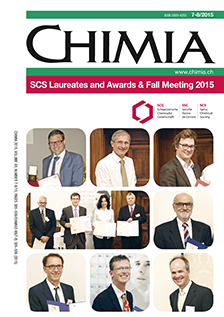What Makes Us Smell: The Biochemistry of Body Odour and the Design of New Deodorant Ingredients
DOI:
https://doi.org/10.2533/chimia.2015.414Keywords:
Aminoacylase, Controlled release, Deodorants, Human body odoursAbstract
Today, axilla odours are socially stigmatized and are targeted with deodorants and antiperspirants representing a multi-billion market. Axilla odours aren't simple byproducts of our metabolism but specifically formed by an intricate interplay between i) specific glands, ii) secreted amino acid conjugates of highly specific odorants and iii) selective enzymes present in microorganisms colonizing our skin, providing a natural 'controlled-release' mechanism. Within a multidisciplinary research project, we were able to elucidate the structure of key body odorants, isolate and characterize secreted amino acid conjugates and identify the enzymes responsible for odour release. These enzymes then served as targets for the development of specific active compounds in an almost medicinal chemistry approach, an approach rarely used in the cosmetic field so far. Here we review the key new insights into the biochemistry of human body odour formation, with some remarks on the experimental steps undertaken and hurdles encountered. The development of deodorant actives and the difficult path to market for such specifically acting cosmetic actives is discussed. The basic insights into the biochemistry also opened the way to address some questions in population genetics: Why have large proportions of Asians lost the 'ability' to form body odours? Do twins smell the same? Are our typical body odours indeed influenced by the immune system as often claimed? After addressing these questions, I'll conclude with the key remaining challenges in this field on an ecological niche that is 'anatomically very close to our heart'.Downloads
Published
2015-08-19
Issue
Section
Scientific Articles
License
Copyright (c) 2015 Swiss Chemical Society

This work is licensed under a Creative Commons Attribution-NonCommercial 4.0 International License.
How to Cite
[1]
A. Natsch, Chimia 2015, 69, 414, DOI: 10.2533/chimia.2015.414.







